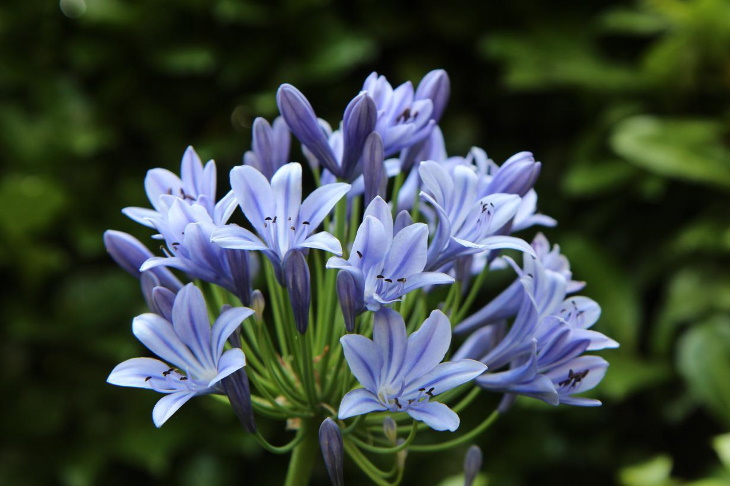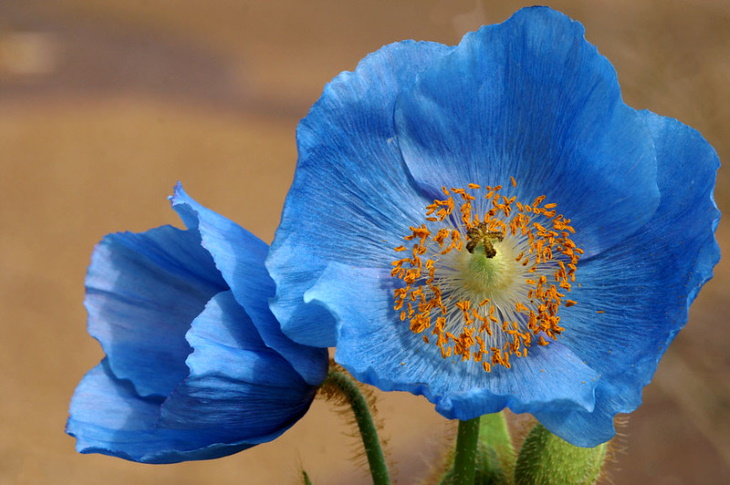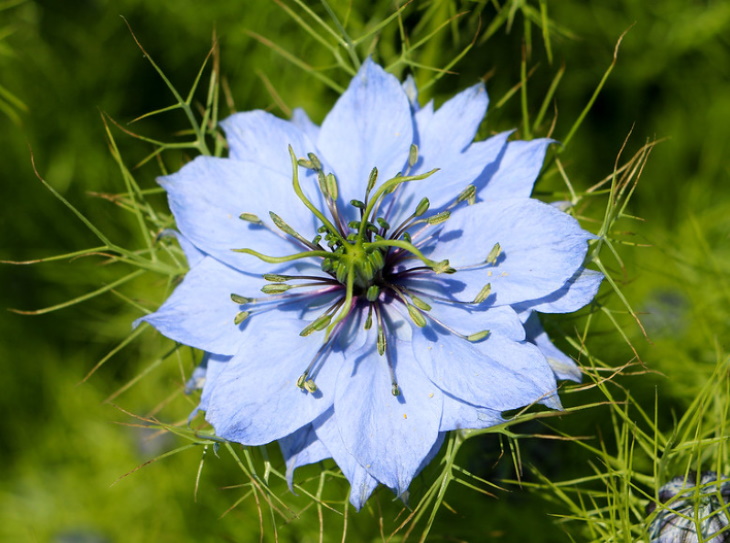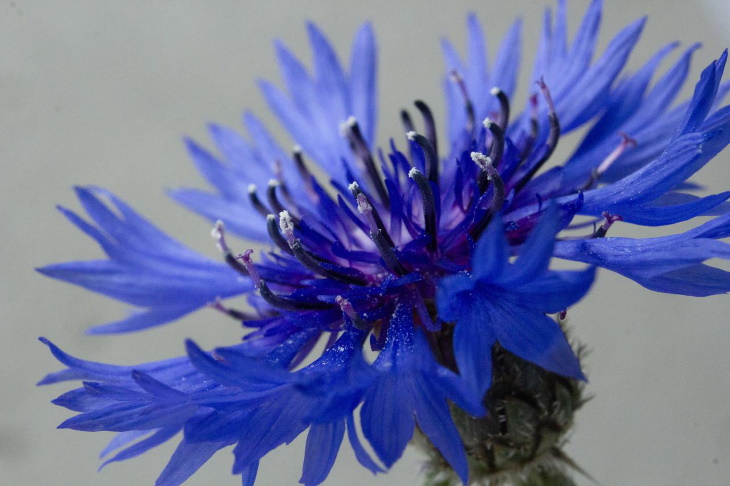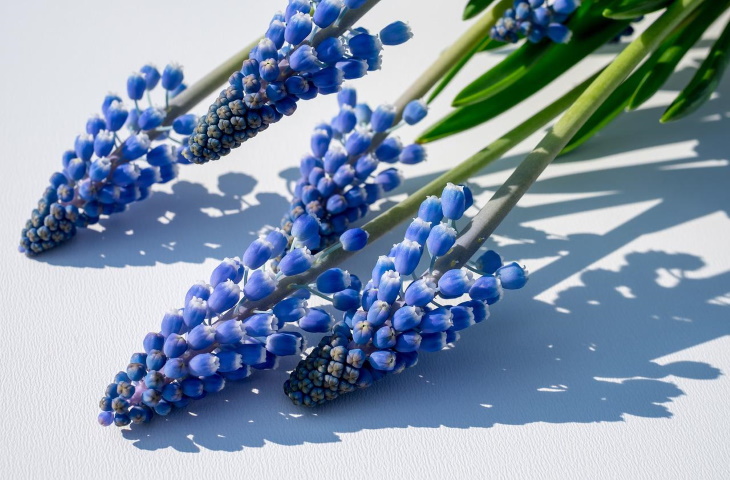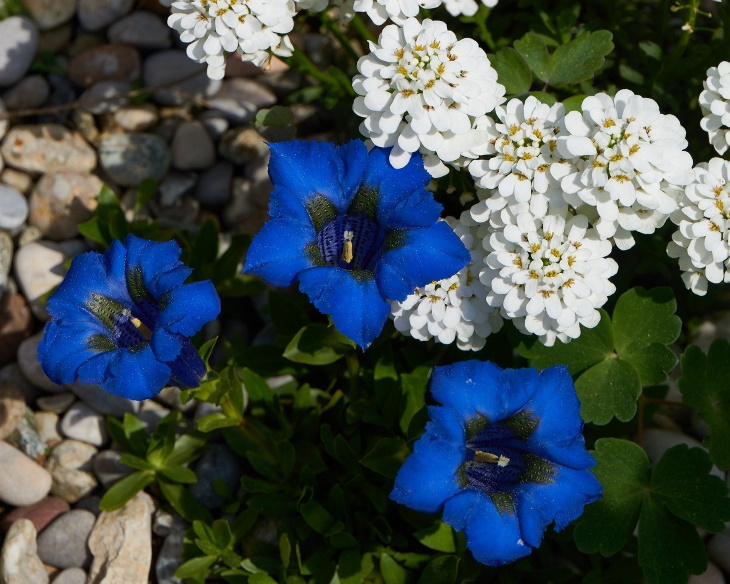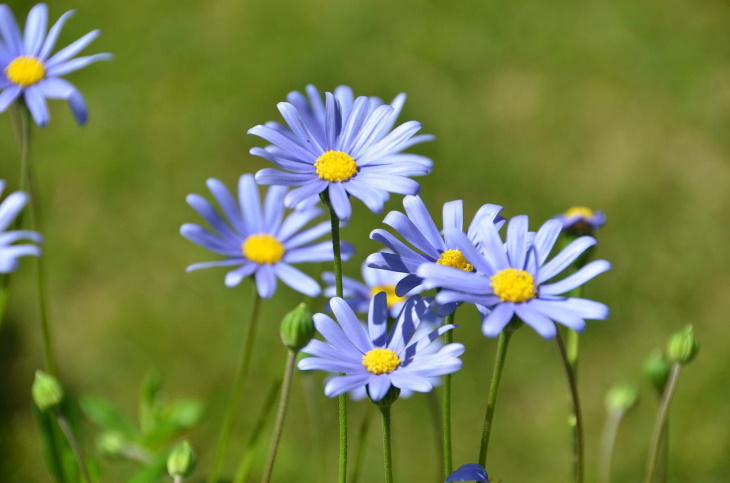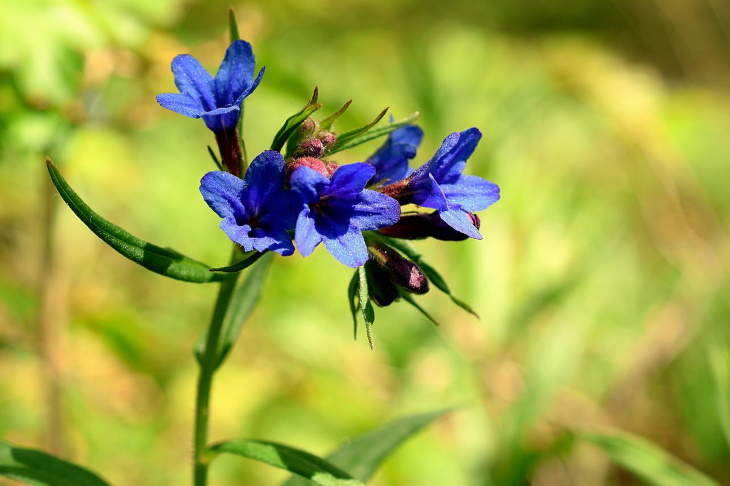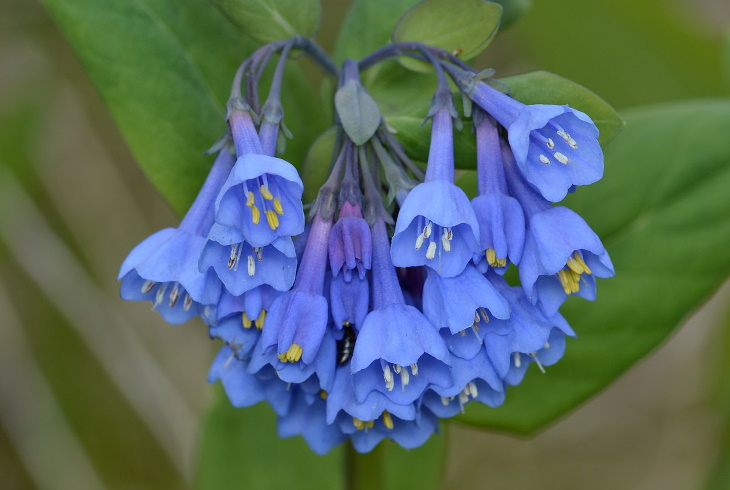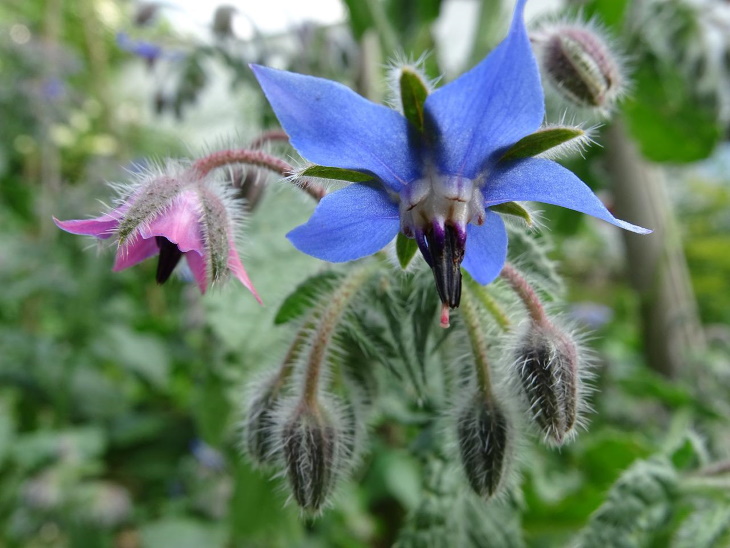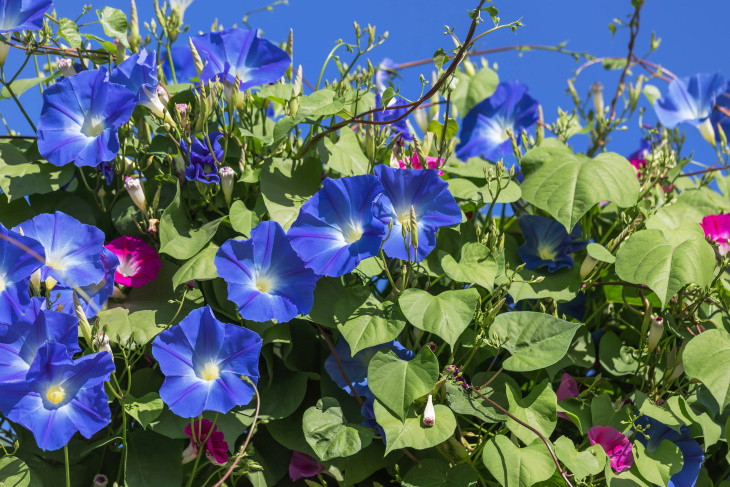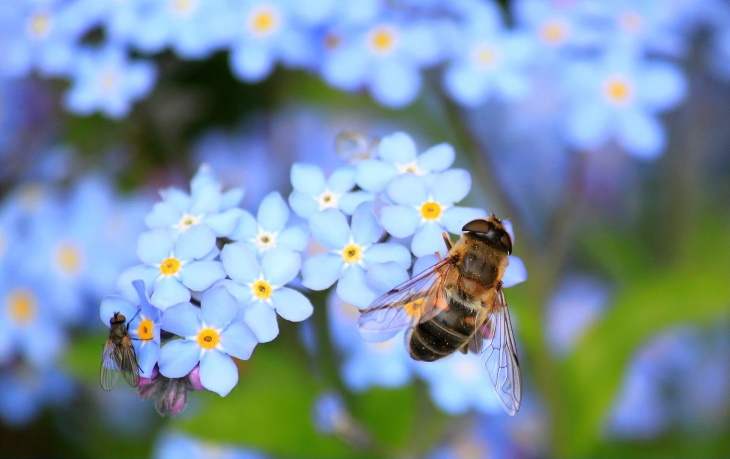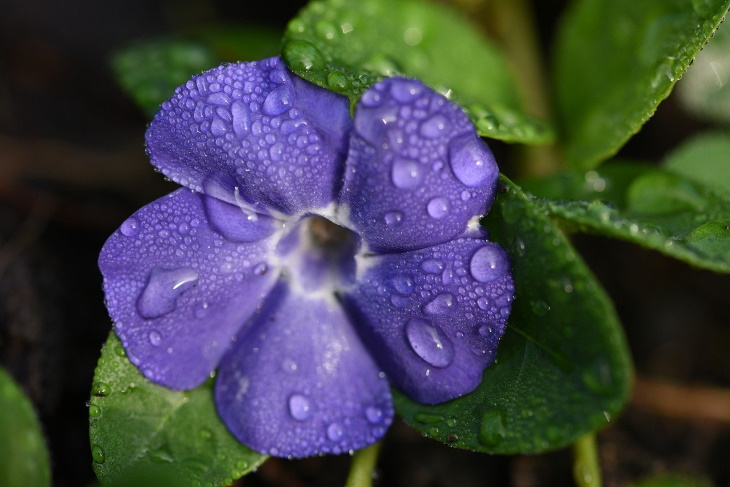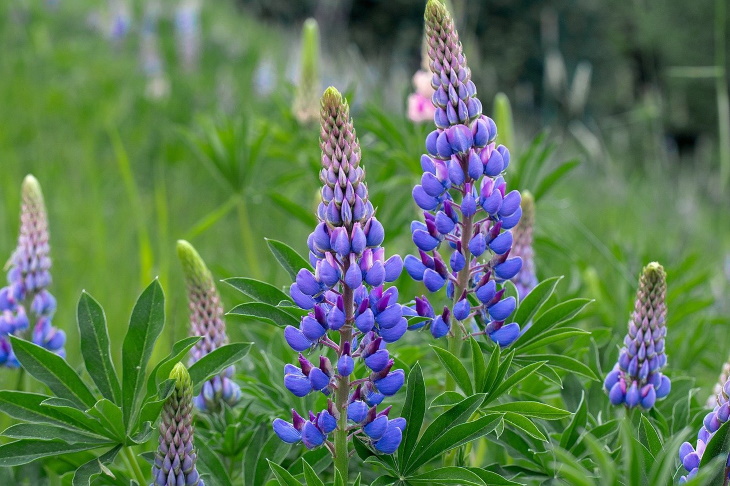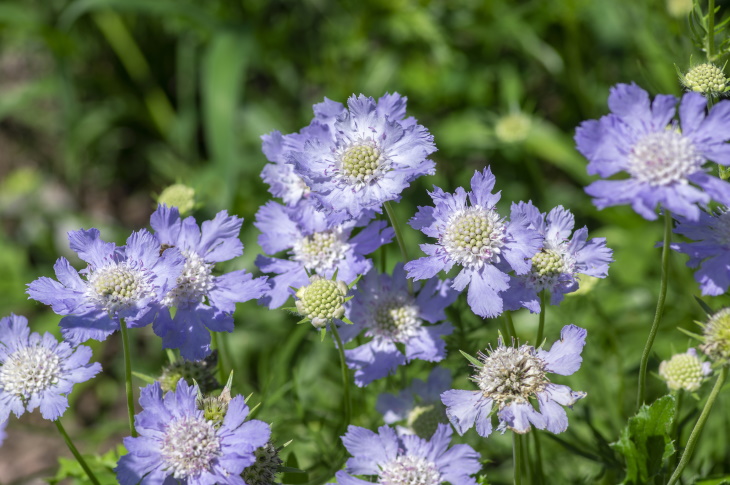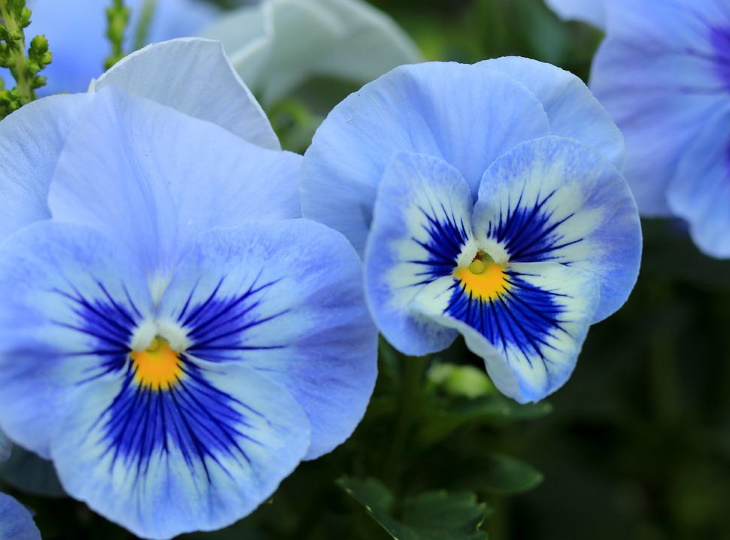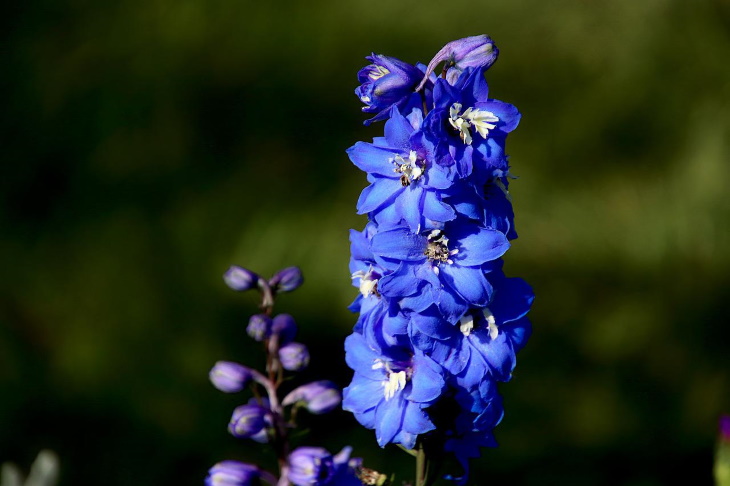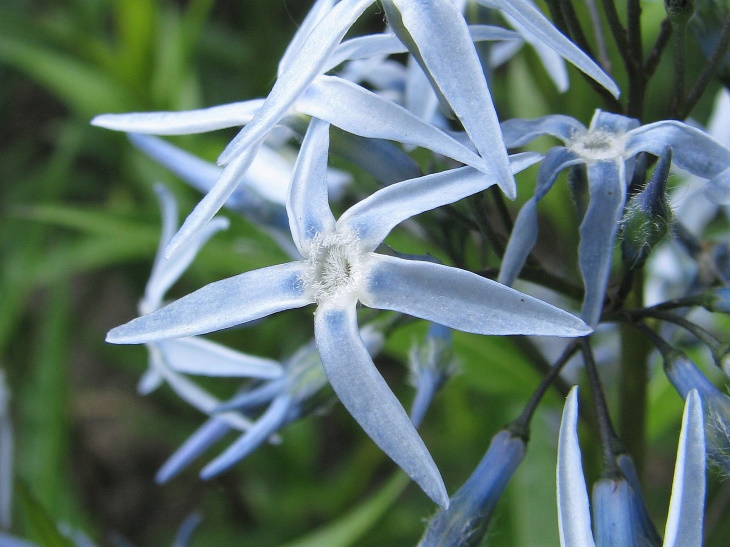French Hydrangea (Hydrangea macrophylla)
The large ball-shaped inflorescences of French hydrangeas are unquestionably impressive. And they come in a bright sky-blue color too! Hydrangea bushes grow about 7 feet tall and produce dozens of flowers that last for months. To keep the color of the flowers clear blue, the soil should be slightly acidic. Prune hydrangeas right after they stop flowering to get the plant to produce more flowers next year.
Lily of the Nile (Agapanthus africanus)
The cascading delicate flowers and long pointed leaves of the Agapanthus africanus look like blue and green fireworks. As the name ‘lily of the Nile’ suggests, the blooms are lily-like but smaller. Agapanthus africanus blossoms throughout the summer and can be perennialized in warmer regions. In more temperate regions, the rhizomes of the plant can be dug up and stored in warmer dry places during winter.
Himalayan Blue Poppy (Meconopsis betonicifolia)
Native to the mountains of Tibet, Himalayan blue poppies can be tricky to grow, but they’re so beautiful that many gardeners are up for the challenge. If you decide to grow these dainty flowers, plant Himalayan blue poppy seeds before the first frost in the winter. The plant requires a part-shade location and a well-drained but rich clay or loamy soil. Keep the soil consistently moist, and expect blooms to appear in late spring to early summer.
Love in a Mist (Nigella damascena)
This delicate flower got the name ‘Love in a Mist’ thanks to the wispy foliage around the flowers. Nigella damascena is an annual flowering plant that needs sandy, well-draining solid and plenty of light to germinate and bloom. These plants are self-seeding, so you don't have to keep replanting them every year. Charming nigella flowers appear in spring and early summer.
Cornflower (Centaurea cyanus)
Did you know that the cornflower is also known as bachelor’s buttons? This classic wildflower has a blue color that is so distinctive that Crayola made a color to replicate it. Centaurea cyanus produces fluffy flowers with ruffled petals that somewhat resemble thistles, but without thorns. It too is an annual plant that self-seeds. Sow cornflower seeds in full sun with average, well-draining solid. Peak bloom is expected in the middle of the summer.
Grape Hyacinth (Muscari sp.)
All hyacinths are excellent spring blooming plants in general. But the bubbly grape hyacinth is our personal favorite. The small rounded flowers form bloom spikes that resemble a cluster of grapes. In fact, this quite distinctive flower shape is how the plant got its name. Like all hyacinths, grape hyacinths are bulbous plants that should be dug out in late fall and replanted in early spring. Grape hyacinths can tolerate a variety of light conditions, but they do need constant watering and well-draining soil.
Gentians (Gentiana sp.)
Blue gentians are among the most beautiful flowers out there, in my humble opinion. Although the large clusters of trumpet-shaped flowers are certainly worth a mention, it is the dark yet vibrant shade of blue that draws so many gardeners to this specific plant. Gentians are alpine and woodland plants, so it makes sense that they require rich, evenly moist soil and a cooler climate. Depending on the variety you pick up, expect flowers to appear anywhere between early to late spring.
Blue Daisy (Felicia amelloides)
Tired of the traditional white daisies? Blue daisies are a twist to this classic flower, as the light blue petals beautifully contrast with the bright yellow core of the bloom. Like most daisies, blue daisies are low-maintenance: they grow fast and require moderate watering. Blue daisies are also resistant to rapid weather shifts and winds.
Siberian squill (Scilla siberica)
Not have much sun in your garden? Then the Siberian squill may just be for you. Scilla siberica grows out of small bulbs that don’t require digging up. The bulbs will multiply over time, creating a blooming carpet every year. These tiny bright blue flowers appear in early spring, and they look beautiful alongside other spring flowers, such as tulips and snowdrops.
Virginia Bluebells (Mertensia virginica)
If you’re looking for a blue flower that also attracts bees and butterflies, Virginia bluebells are the flower for you. Mertensia virginica inflorescences are clusters of down-turned bell-shaped flowers. A native wildflower in North America, this plant naturalizes quite easily in the USA. Blooms appear in springtime, and then the plant goes dormant in summer, ready to return the following spring.
Borage (Borago officinalis)
Borage flowers are a constellation of blue, purple, and pink, are they are just remarkable! Borage is effortless to sow, grow, and get to bloom, and the plant will self-seed after blooming too. Borage blooms have an unusual scent reminiscent of cucumbers, and it is sometimes even used as a culinary herb for that reason. Just be careful when harvesting its leaves, as they can become prickly over time. Like Virginia bluebells, borage attracts pollinators too.
Morning Glory Ipomoea Tricolor 'Heavenly Blue'
Morning glory flowers come in many shades, but the ‘Heavenly Blue’ cultivar is among the most beautiful. These flowering vines will climb any vertical surface and produce large saucer-shaped flowers in the summer that last until the first frost. They are typically annuals and grown from seed, but they can self-seed at times. Morning glories require full sun and well-draining soil.
Forget-Me-Nots (Myosotis palustris)
They'll charm you with their name, but you'll love them for their easy-to-please nature! This classic flower is heat-tolerant, so it will feel at home in a variety of climates. Forget-me-nots make an excellent ground cover plant, as they create a dense cover of small flowers. These cute flowers typically bloom between spring and summer, and they are sure to attract pollinators to your garden.
Periwinkle (Catharanthus roseus)
How could we ever skip a flower that gave us the color periwinkle blue? I'm personally ever enchanted by the complexity of this color. But what about the plant itself? It's a small but dense shrub that's often used as a ground-cover plant. Periwinkle doesn't require strong sun but is pretty particular about well-draining soil and a regular watering schedule.
Lupine (Lupinus)
The tall spires and exotic leaves of this plant are a truly magnificent sight in any garden. These plants make an excellent vertical element in your garden - they grow up to 3-4 feet tall. Lupine is best grown from seed in late spring or fall in a place that provides full sun. Lupines bloom from spring through summertime.
Pincushion Flower (Scabiosa sp.)
Pincushion flowers are largely favored by gardeners because they’re resistant to dry and hot weather conditions. These cute fluffy flowers come in several colors, and they will bloom throughout the summer season. Tip: to promote more blooms, cut off the old flowers once they dry out.
Blue Pansy (Viola tricolor var. hortensis)
Blue pansies are rather rare, but once you see one, you’ll want to plant them everywhere in your garden. They are elegant, velvety, and simply beautiful. Pansies prefer to live in the shade and require constantly moist but well-draining soil. Depending on where you live, expect blooms to show up at different times of the year. In warm climates, they typically flower in fall or winter, but in cooler weather, they will bloom from spring to summer.
Iris (Iris)
The elegant beauty of the iris is simply irresistible! And the light blue or sapphire varieties of this famous plant are especially striking. Depending on the variety, irises require a different type of soil, so make sure to read about the specific conditions of the species you've got. Irises bloom in late spring to early summer.
Delphinium (Delphinium selections)
Delphiniums have true-blue flowers. These perennial plants favor cooler climates and tend to not do well in the heat. Some delphinium varieties are rather tall, so make sure to support those by staking them. Delphiniums require full sun to part shade, and rich soil to get the brightest flowers. Expect blooms anywhere from late spring to early summer.
Blue Star (Amsonia sp.)
Aren't the star-shaped tiny flowers of the Amsonia cute? Moreover, some cultivars have fluffy flower clusters too. Plant blue stars in rich, humusy soil in a location with either full sun or part shade. Amsonias are spring bloomers, and they typically appear between March and May. Also, note that this plant comes in many shades of blue - from a light baby blue to a deep blue - so feel free to pick and choose between cultivars.


